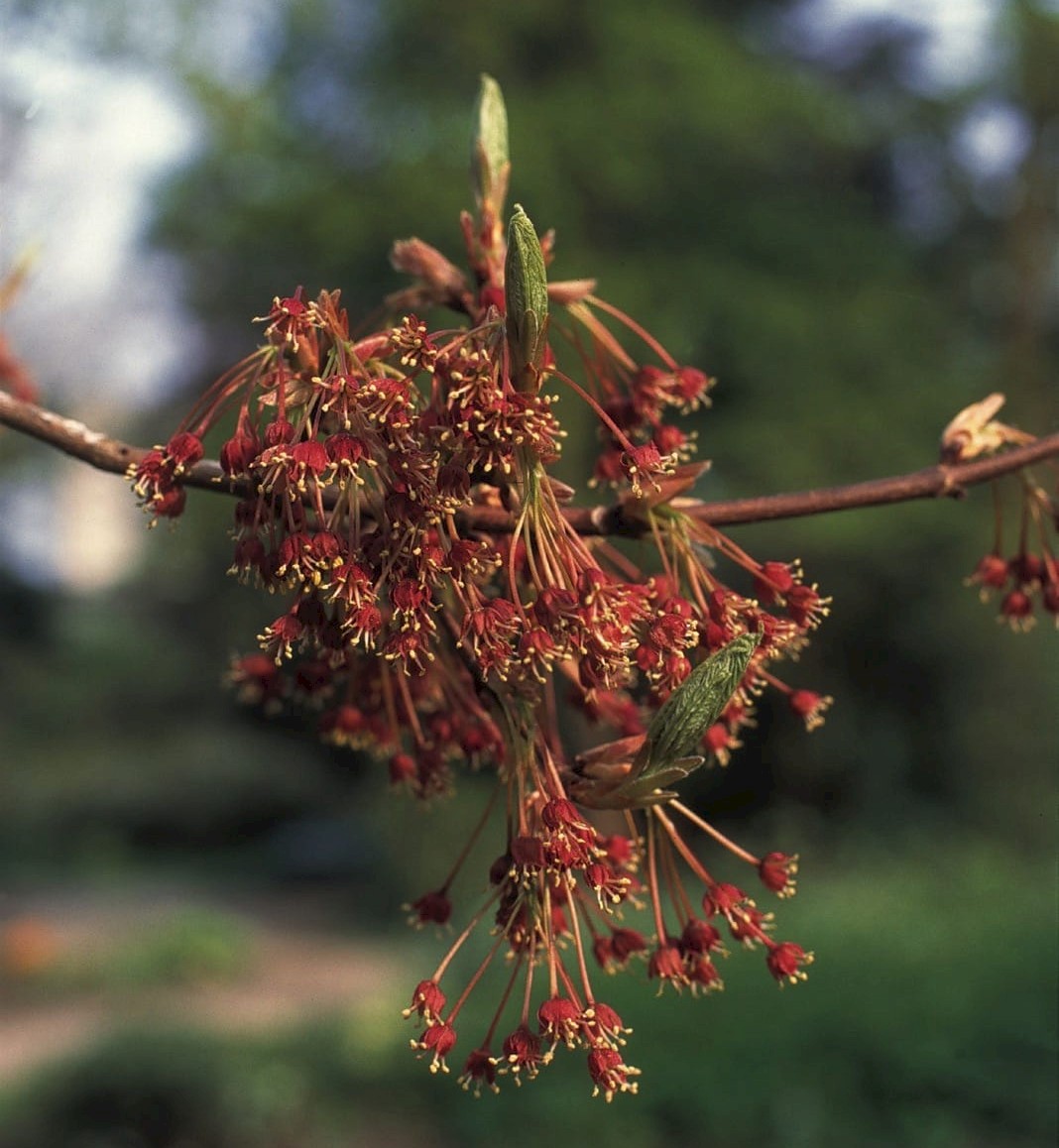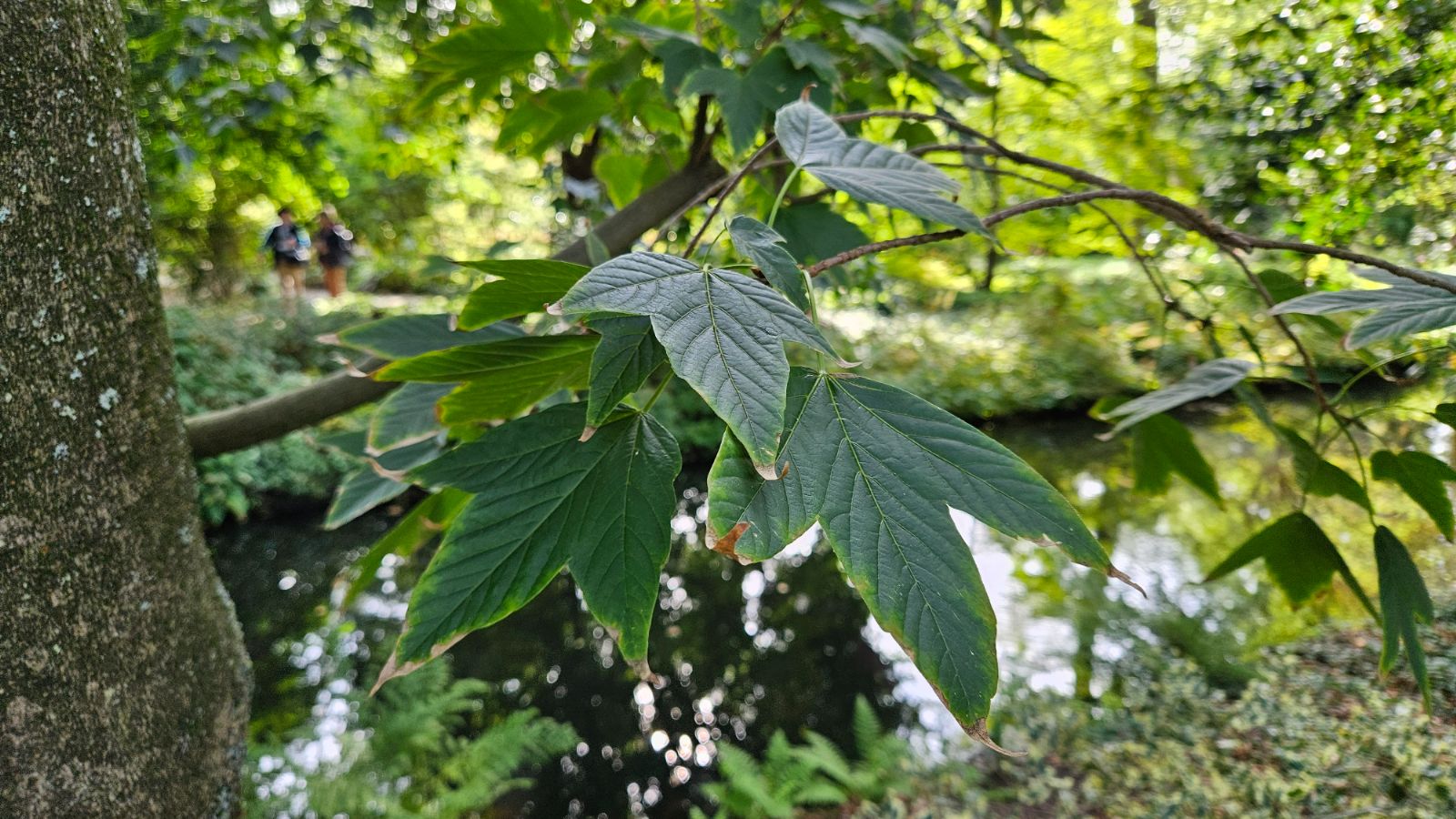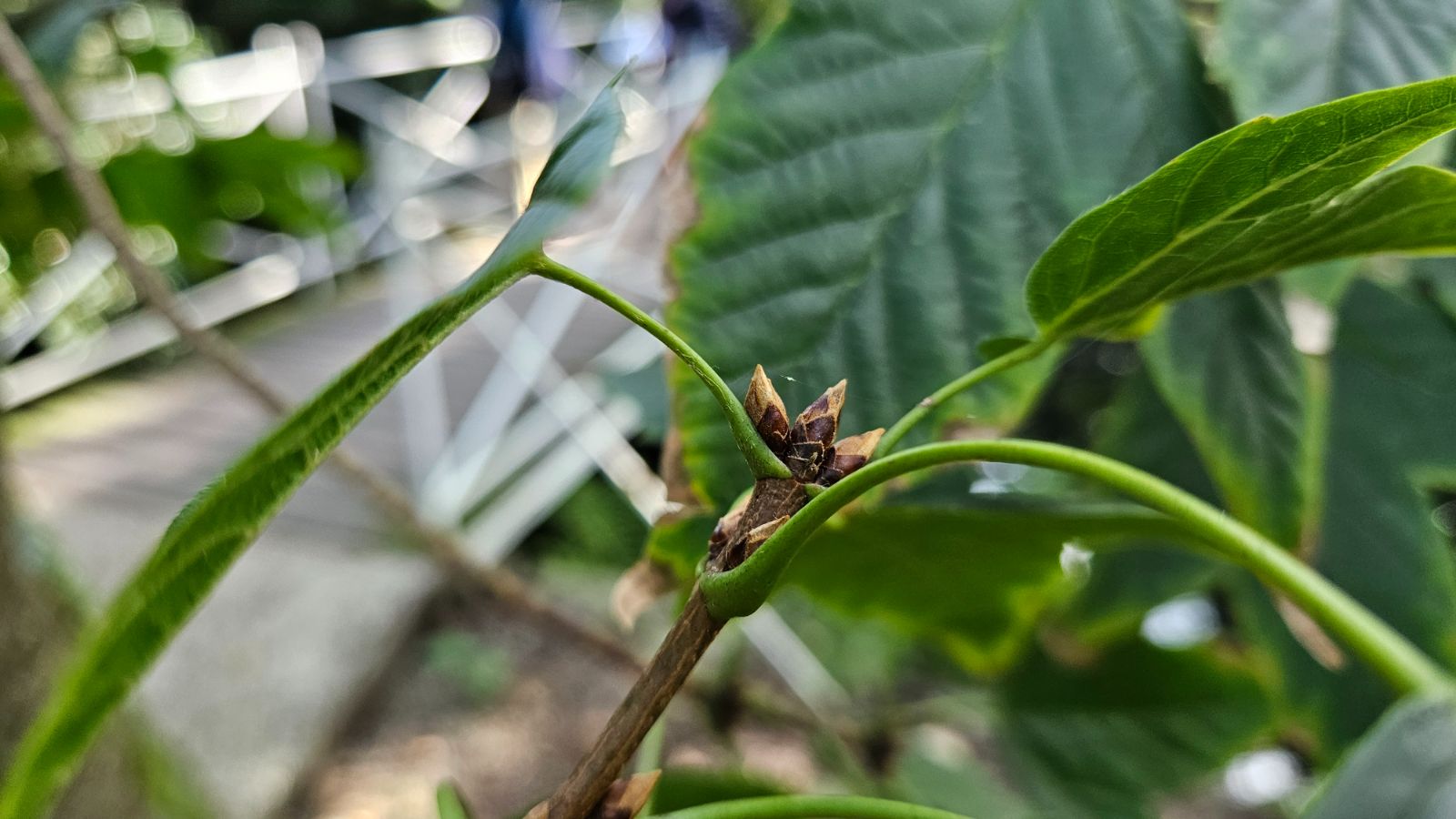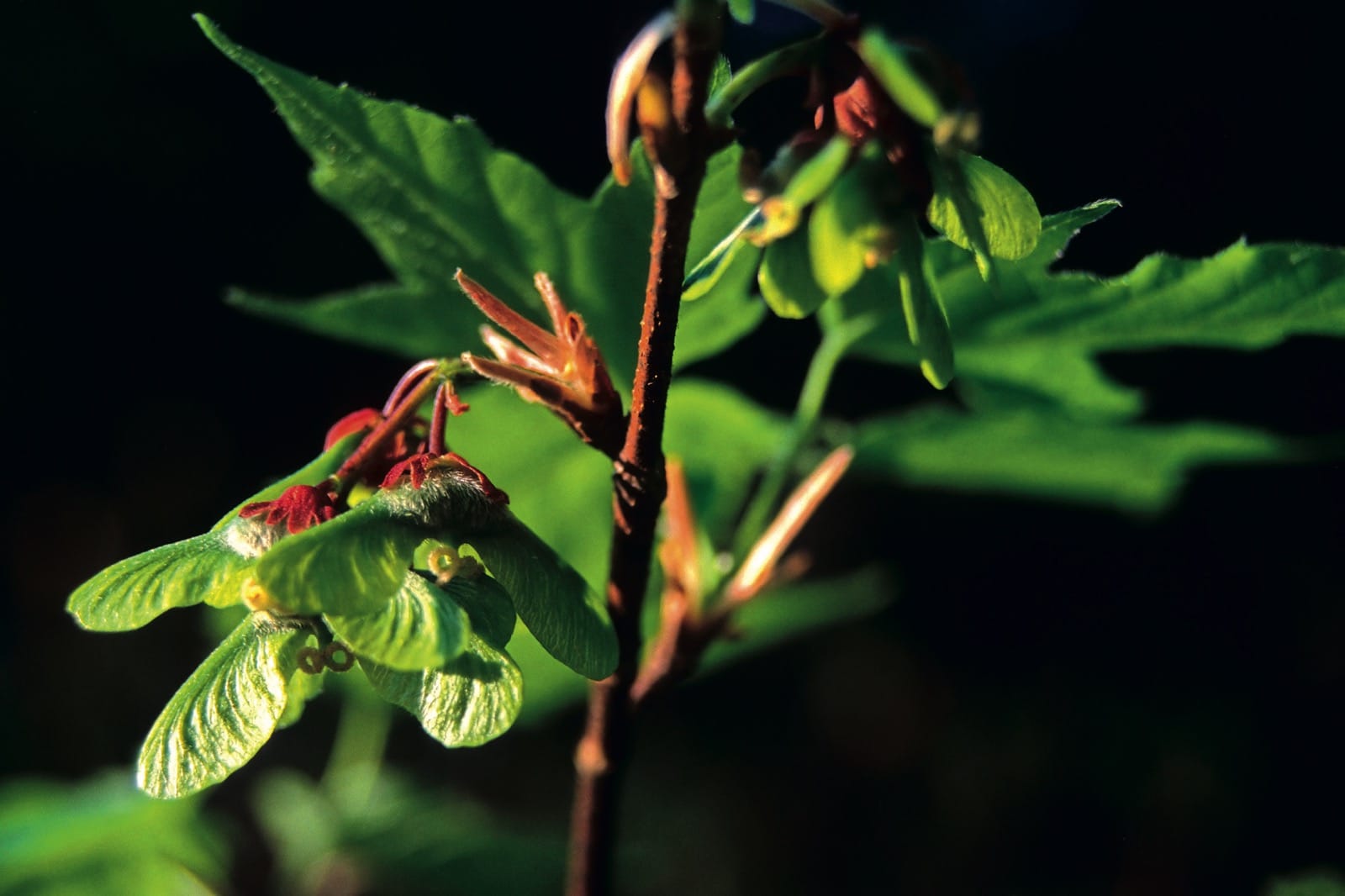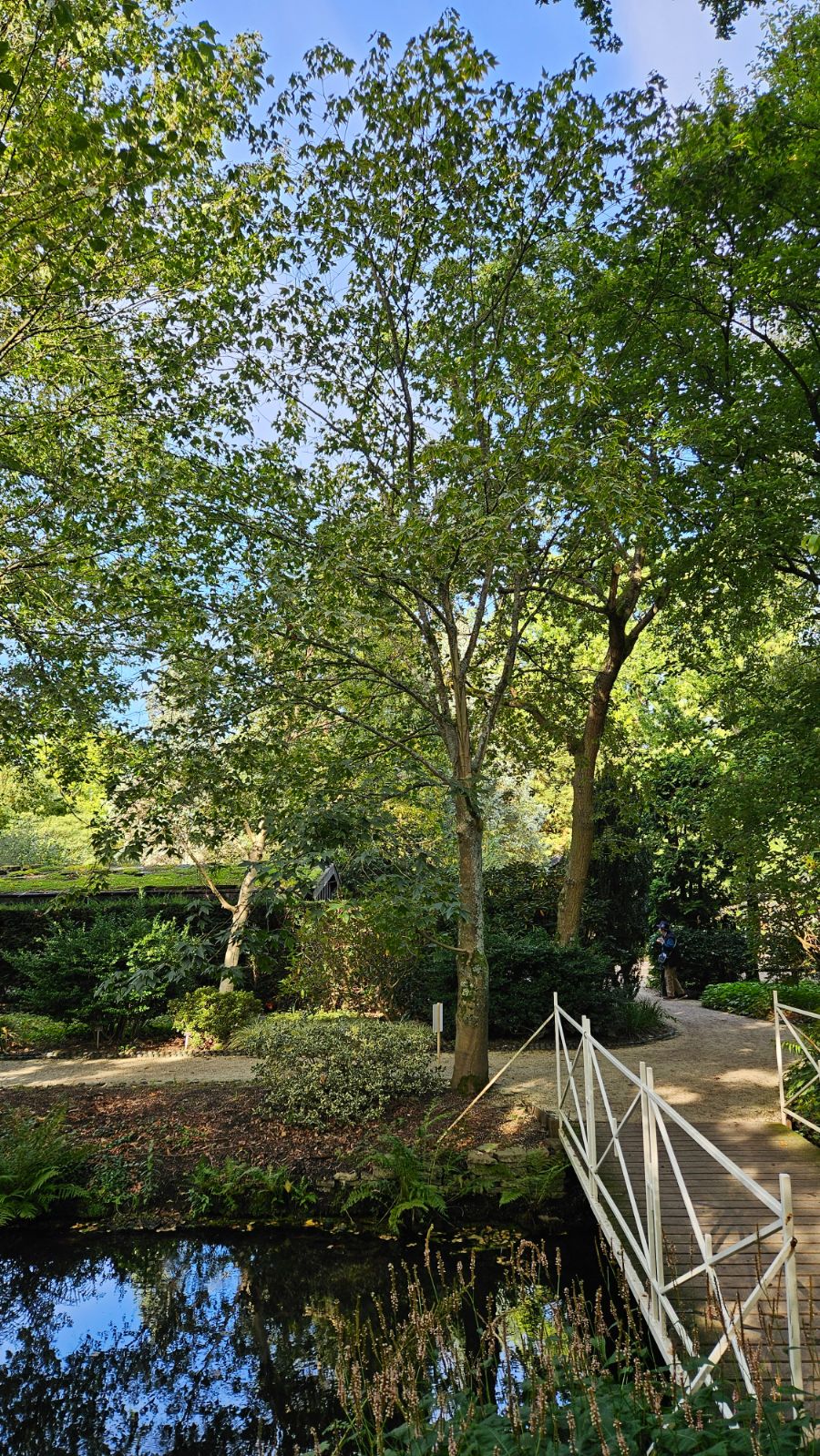Acer sinopurpurascens
Sponsor
Kindly sponsored by
a member of the International Dendrology Society
Credits
Article from New Trees by John Grimshaw & Ross Bayton
Recommended citation
'Acer sinopurpurascens' from the website Trees and Shrubs Online (treesandshrubsonline.
Genus
- Acer
- Sect. Lithocarpa, Ser. Lithocarpa
Other taxa in genus
- Acer acuminatum
- Acer amplum
- Acer argutum
- Acer barbinerve
- Acer buergerianum
- Acer caesium
- Acer calcaratum
- Acer campbellii
- Acer campestre
- Acer 'Candy Stripe'
- Acer capillipes
- Acer cappadocicum
- Acer carpinifolium
- Acer 'Cascade'
- Acer caudatum
- Acer ceriferum
- Acer chapaense
- Acer chienii
- Acer circinatum
- Acer cissifolium
- Acer × conspicuum
- Acer cordatum
- Acer coriaceifolium
- Acer × coriaceum
- Acer crataegifolium
- Acer davidii
- Acer diabolicum
- Acer distylum
- Acer divergens
- Acer duplicatoserratum
- Acer elegantulum
- Acer erianthum
- Acer 'Esk Flamingo'
- Acer fargesii
- Acer fenzelianum
- Acer flabellatum
- Acer forrestii
- Acer franchetii
- Acer × freemanii
- Acer fulvescens
- Acer 'Gimborn'
- Acer ginnala
- Acer glabrum
- Acer 'Gold Coin'
- Acer granatense
- Acer grandidentatum
- Acer griseum
- Acer heldreichii
- Acer henryi
- Acer × hillieri
- Acer hookeri
- Acer hyrcanum
- Acer japonicum
- Acer kawakamii
- Acer komarovii
- Acer laevigatum
- Acer laurinum
- Acer laxiflorum
- Acer lobelii
- Acer longipes
- Acer macrophyllum
- Acer mandshuricum
- Acer maximowiczianum
- Acer maximowiczii
- Acer metcalfii
- Acer miaotaiense
- Acer micranthum
- Acer 'Mindavi'
- Acer 'Minorient'
- Acer miyabei
- Acer miyabei × campestre
- Acer monspessulanum
- Acer morifolium
- Acer 'Mozart'
- Acer oblongum
- Acer obtusifolium
- Acer okamotoanum
- Acer oliverianum
- Acer opalus
- Acer orientale
- Acer palmatum
- Acer papilio
- Acer pauciflorum
- Acer pectinatum
- Acer pensylvanicum
- Acer pentaphyllum
- Acer pentapotamicum
- Acer pictum
- Acer pilosum
- Acer pinnatinervium
- Acer platanoides
- Acer platanoides × amplum
- Acer platanoides × truncatum
- Acer × pseudoheldreichii
- Acer pseudoplatanus
- Acer pseudosieboldianum
- Acer pubinerve
- Acer pycnanthum
- Acer rubescens
- Acer rubrum
- Acer rufinerve
- Acer saccharinum
- Acer saccharum
- Acer sempervirens
- Acer 'Serpentine'
- Acer serrulatum
- Acer shenkanense
- Acer sieboldianum
- Acer sikkimense
- Acer 'Silver Cardinal'
- Acer 'Silver Ghost'
- Acer sinense
- Acer spicatum
- Acer stachyophyllum
- Acer taronense
- Acer tataricum
- Acer tegmentosum
- Acer tenellum
- Acer tetramerum
- Acer tibetense
- Acer tonkinense
- Acer triflorum
- Acer truncatum
- Acer tschonoskii
- Acer turkestanicum
- Acer tutcheri
- Acer ukurunduense
- Acer velutinum
- Acer wardii
- Acer 'White Tigress'
- Acer wilsonii
- Acer × zoeschense
Tree 8–10 m, though often smaller in cultivation. Bark greyish brown, almost smooth. Branchlets green initially, later grey-brown. Leaves deciduous, deeply five-lobed or rarely three-lobed, upper surface dull green, lower surface pale green, both surfaces pilose along the veins when young, margins entire or rarely dentate, apex acute or acuminate; petiole 4–8.5 cm long, slender, pubescent when young, exudes milky sap when broken; autumn colour yellow. Inflorescence lateral, pendulous or corymbose racemes with three to seven flowers, dioecious. Flowers 5-merous; sepals (three to) five (to six), ~0.5 cm long though unequal in size, purplish red, petals five (absent in staminate flowers), same length as sepals, stamens eight, inserted inside nectar disc. Samaras 3–6 cm long, pale yellow, bristly, wings spreading obtusely. Flowering April, fruiting September (China). Van Gelderen et al. 1994, van Gelderen & van Gelderen 1999, Xu et al. 2008. Distribution CHINA: southern Anhui, northeast Hubei, northern Jiangxi, northwest Zhejiang. Habitat Mixed forest between 700 and 1000 m asl. USDA Hardiness Zone 5–6. Conservation status Not evaluated. Illustration NT69, NT110. Cross-reference K106.
Although an attractive and elegant tree that deserves widespread cultivation, Acer sinopurpurascens is extremely rare in horticulture due to difficulties in its propagation, possibilities for grafting being limited by the absence of related species with latex (van Gelderen & van Gelderen 1999). Neither is seed a useful alternative as it is a dioecious species and specimens are widely separated. A few arranged marriages might be useful. The red flowers, appearing early in the year and on young plants, are spectacular (le Hardÿ de Beaulieu 2003).
The male tree is at Arboretum Trompenburg, growing by the canal running through the garden. When observed in 2005 it was c.10 m tall (25 cm dbh) with two more or less equal main stems from a fork at 3.5 m. The branches are spreading and slightly pendulous, bearing the dark green, three-pointed leaves as a light canopy. This specimen was obtained from Dr Illa Martin from Germany in 1964, as part of a dispersal of stock following the death of her husband, but its ultimate origin is unknown (van Hoey Smith 2001). In England a female tree at the Valley Gardens is mentioned and illustrated by van Gelderen & van Gelderen (1999), but this specimen is not recorded by TROBI. That database does however record two further good specimens, a 5 m tree at Batsford Park, Gloucestershire in 2003, and a 7.3 m male individual at the Sir Harold Hillier Gardens in 2002. A few plants propagated from the Trompenburg specimen have been distributed by Esveld, but overall this is a good example of a case where a concerted conservation attempt is needed to propagate a rare and recalcitrant species. In Poland, a female tree derived from Shanghai Botanic Garden seed has been hardy since 1981 at Rogów and has reached over 7 m – but again, being a solitary specimen, it does not set viable seed (Tumilowicz 2002). The species appears to be unknown in North American collections, but its hardiness should be useful there.

